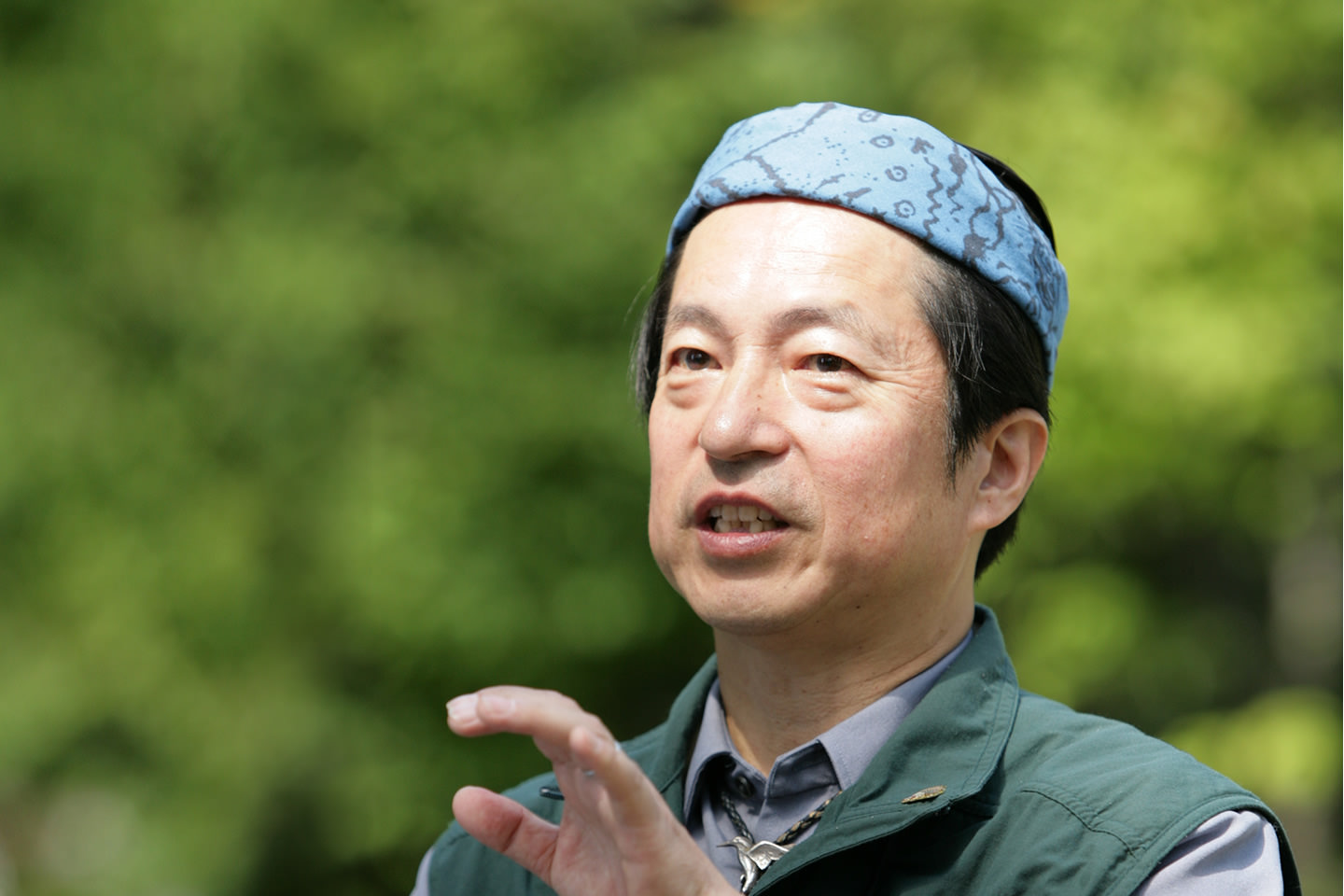Unraveling the mysteries of birds vol.2
Why do birds fly?
I want to know more! Uncover the secrets of how birds fly and how their feathers work to help them fly.

I want to know more! Uncover the secrets of how birds fly and how their feathers work to help them fly.

Have you ever thought how wonderful it would be if you could fly like a bird?
That fascination is what led humans to build an airplane.
Some insects also fly but they are nothing compared to birds.
To relocate according to the season, some birds migrate over 10,000 kilometers (6,200 miles),
and some fly thousands of kilometers at a time non-stop, while others spend most of their life flying,
except when raising chicks.

Challenge #1
The wings of birds have specialized feathers for flying called “flight feathers.” The power for flight is generated by repetitively pushing the flight feathers downward. When the bird raises its wings the flight feathers become vertical, releasing the air, and when it lowers them the flight feathers become horizontal, pushing the air.
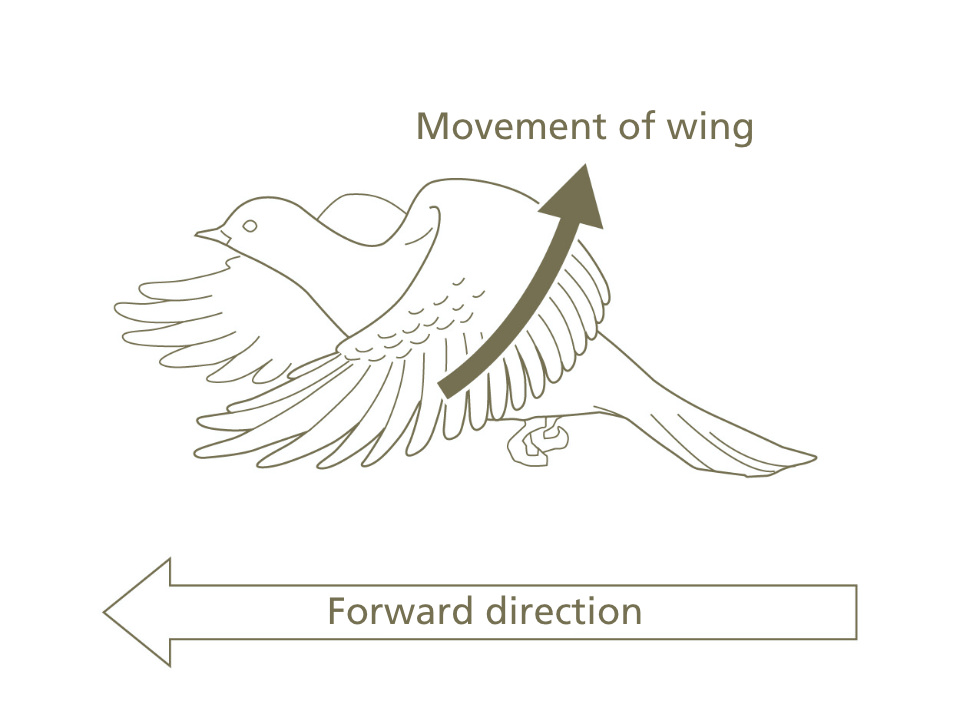
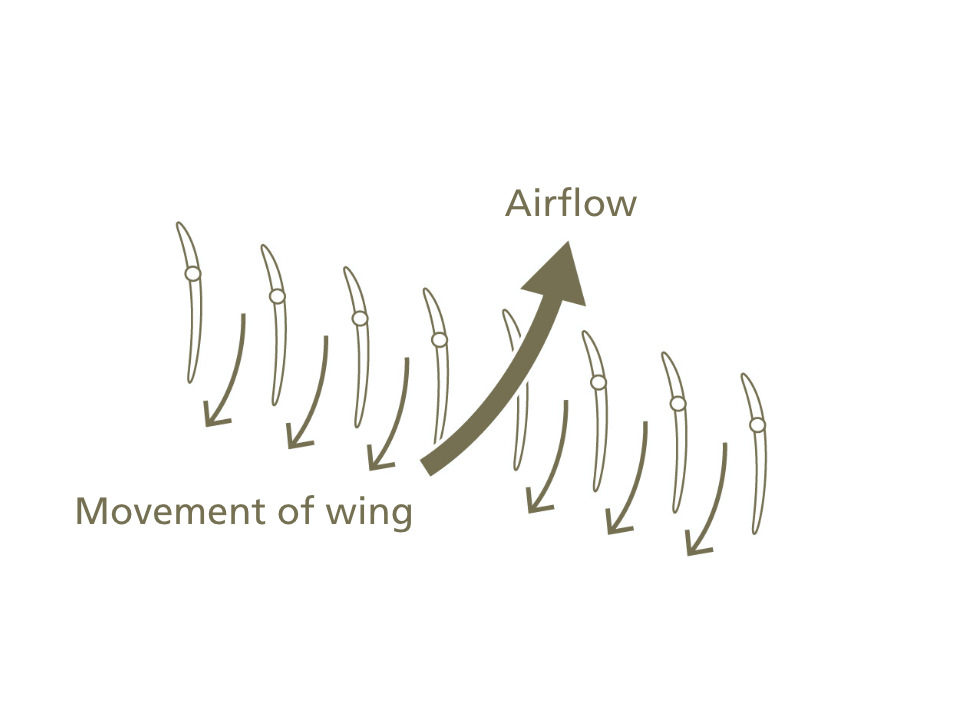
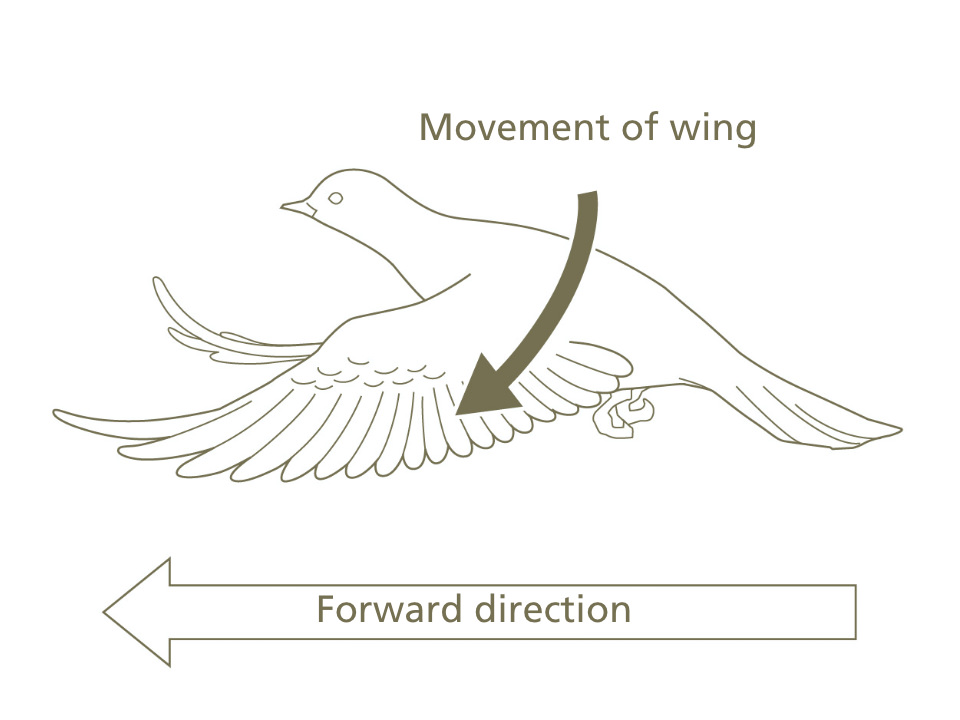

Birds have feathers on their wings, called “primary feathers,” which help them fly forward. Primary feathers have a difference in width on the right side and the left side of the shaft; the narrow side is the front and the wide side is the back. Since airflow is pushed toward the back by the wide side when the wings flap downward, thrust is created, enabling the bird to fly forward.
If you find a primary feather, try an experiment with your family or friends. Two people stand facing each other, and one person holds both hands up with their palms facing. The other person holds the feather horizontally pointing outward, and with a movement like waving a palm fan, brings the feather straight down between their partner's hands.
The person with their hands held up should feel the airflow from the wide side of the feather. The larger the primary feather is the easier it is to do. (Remember to wash your hands with soap after handling bird feathers!)
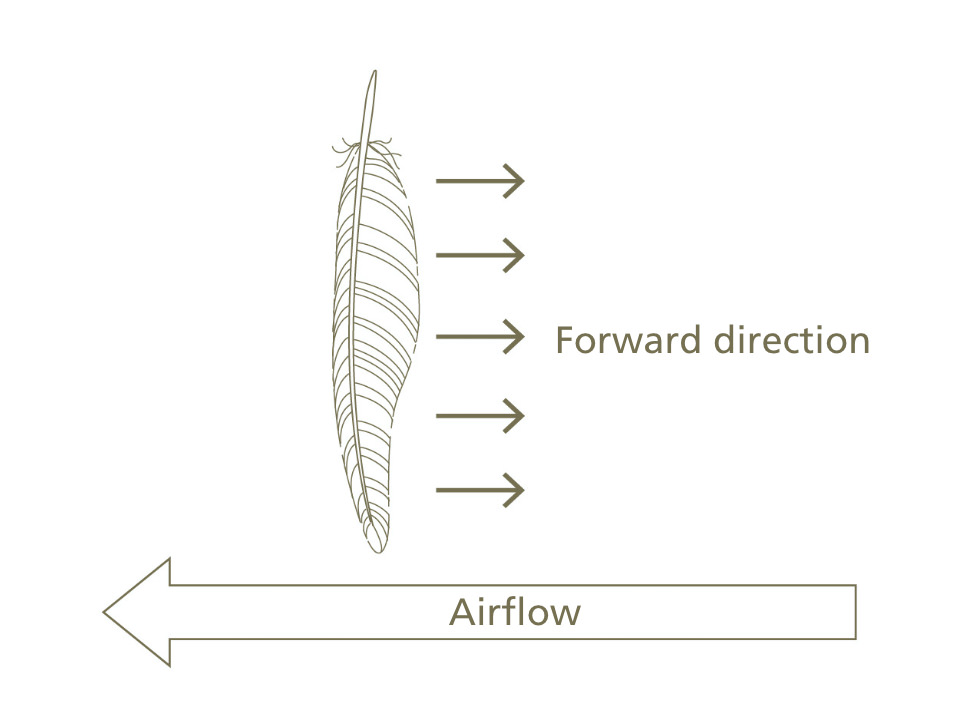
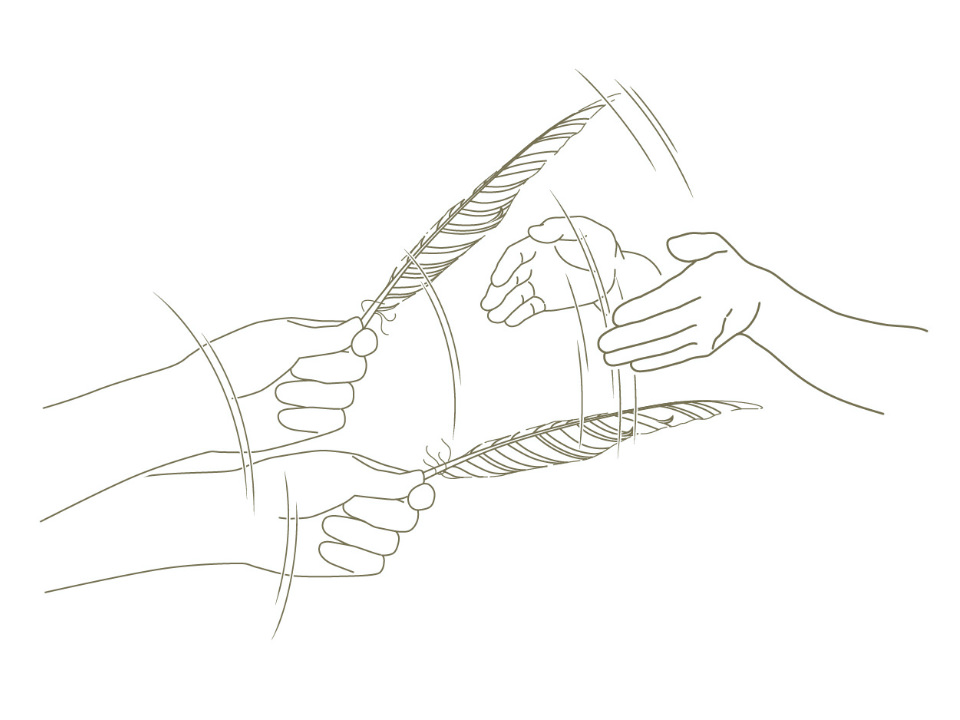
Birds are ready to fly at any moment in order to escape from predators or to catch prey. It is essential for them to preen their feathers in order to also remove mites, ticks, and other parasites.
Birds are often seen “bathing.” Many birds take a quick bath in shallow water, such as a puddle, by rustling their feathers a few times. (It's such a short time that people who just take a quick shower, are often said to “take a bird bath.”)
Swallows bathe while flying, and Brown-eared Bulbuls and Common Kingfishers bathe by diving into water. If you see a bird bathing, watch as it shakes the water off after coming out and then repositions its feathers with its bill.
Some birds, such as chickens and the Eurasian Skylark, take a “dust bath” instead of bathing in water. There are also birds that spread their wings wide to “sunbathe,” and others that take a “heat bath” by sitting on the hot ground. Some birds such as crows take an ant in their bill and rub it along their wings for an “ant bath,” while other birds have been observed taking a “smoke bath,” flying through wafting chimney smoke. It seems that sparrows often like to take a dust bath after having a water bath.
Bird Bathing
*In order to view videos, it is necessary to consent to the use of cookies by our website. If the videos are not displayed, please click the "Cookie Settings" and accept cookies.
Bird Bathing
*In order to view videos, it is necessary to consent to the use of cookies by our website. If the videos are not displayed, please click the "Cookie Settings" and accept cookies.

Challenge #2
There are several groups of flight feathers and each has a different function.
At the end of the wing are the primary feathers, numbering around nine or ten, which create the thrust to fly forward, and next to those are the secondary feathers.
The secondaries, usually numbering about six on a small bird, are for lift. They are shorter and fatter than the primaries and the shaft runs up the middle of the feather. Since airflow is pushed under the secondaries when the wings flap downward, lift is created, enabling the bird to fly upward.
Next to the secondaries on the inside are the tertial feathers, which cover the space between the wing and the body. Small birds usually have three tertials.
When birds spread their wings, they look large, it is because these 20 or so large flight feathers spread out widely. When birds fold in their wings, the flight feathers overlap each other and are positioned compactly.
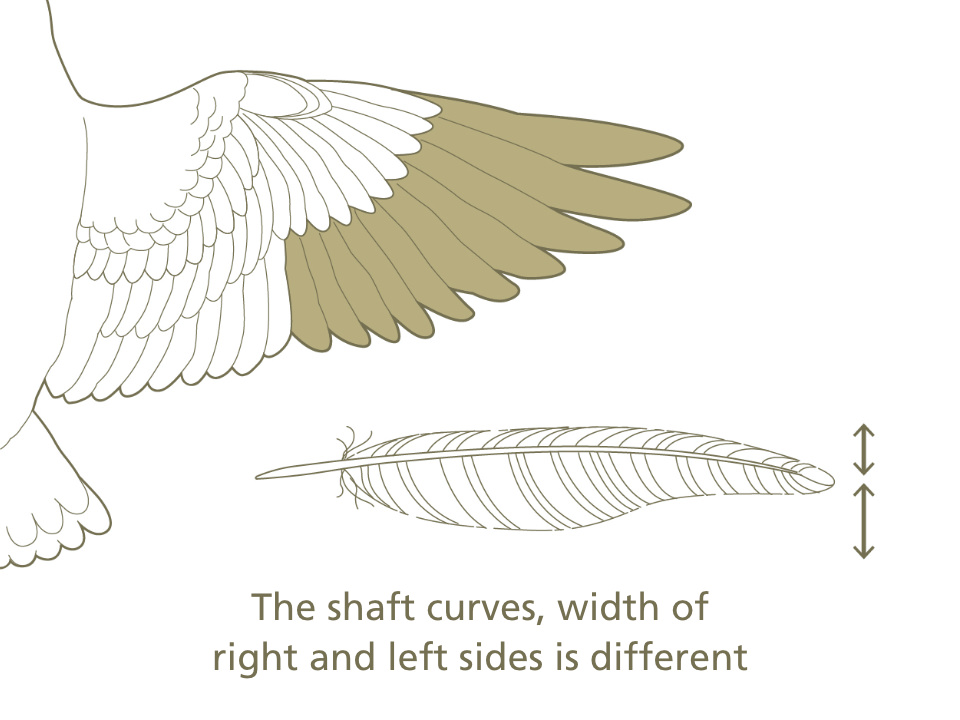
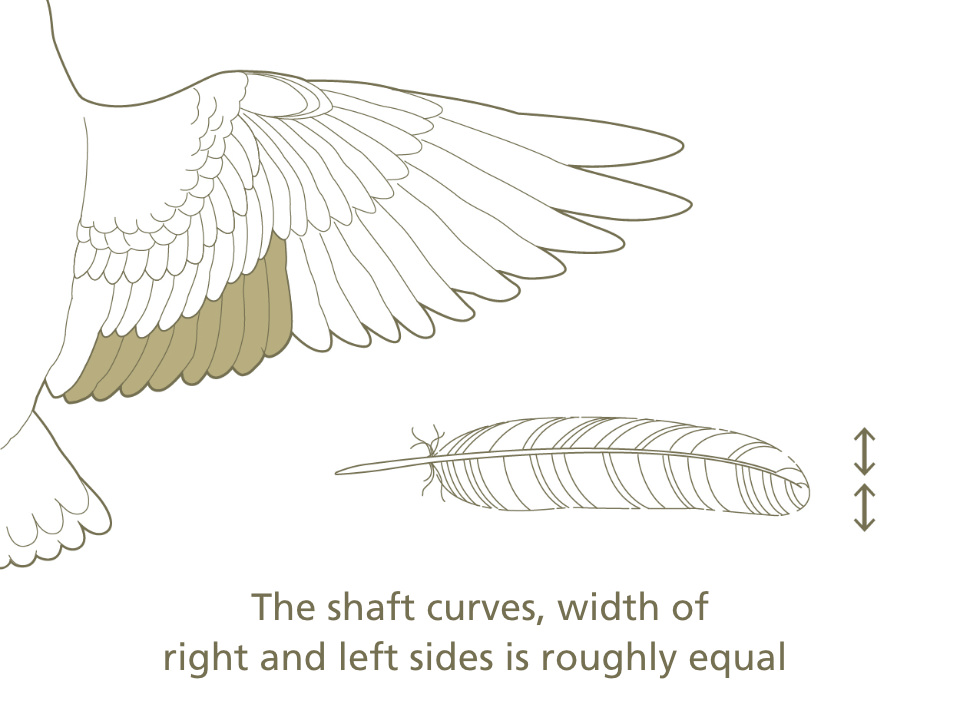


Birds use their tail feathers to slow down or change direction in the air. They generally have 12 tail feathers, which often resemble the shape of secondary feathers in the wing. The difference is that the shaft of tail feathers is usually straight. The shaft of flight feathers in the wing curves slightly in the direction of movement forward or upward.
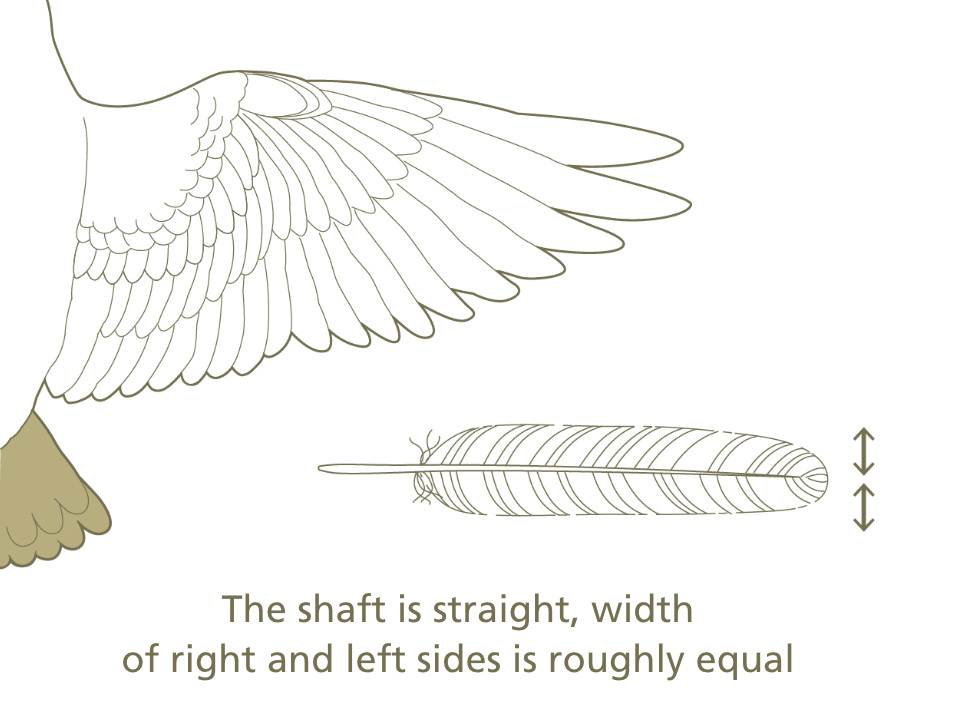
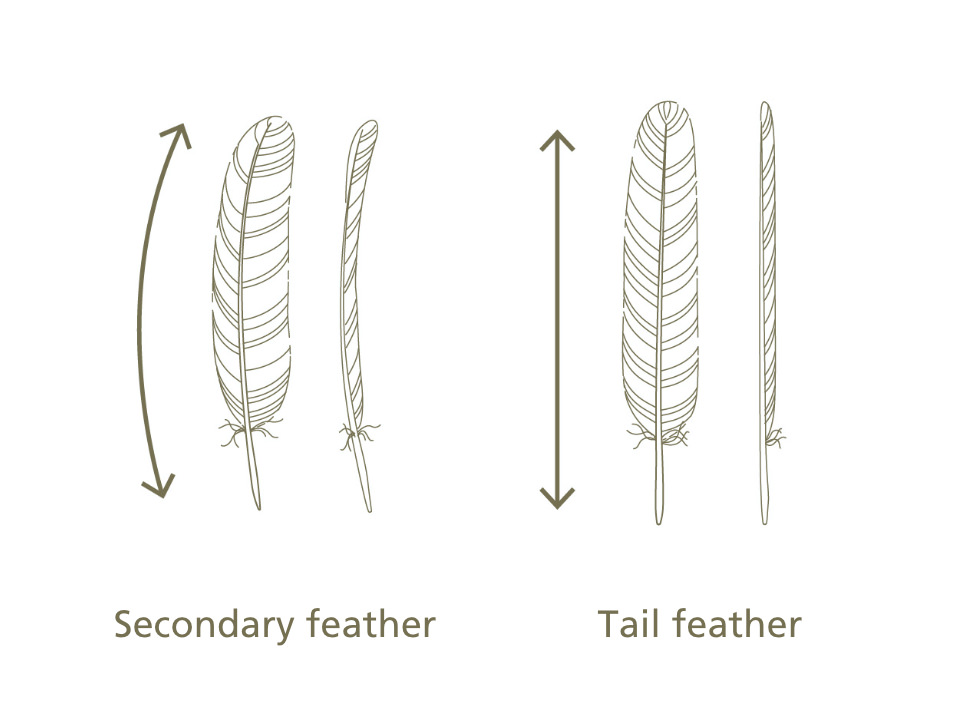

Challenge #3
Even if you attached wings to yourself with the hope of flying, you unfortunately would not be able to. That is because the secret to how birds fly is not only in their feathers but also in their body.
Firstly, there are the muscles. The muscles in the chest required for a bird to flap its wings are very well developed. In some birds, the muscles in the chest alone account for more than one quarter of its body weight. (The proportion in humans is said to be one one-hundredth.)
And, their bodies are lightweight; the Japanese White-eye, which is smaller than a sparrow, weighs a mere 10 grams the weight of several postcards.
The bones of birds are hollow inside like a tunnel, their intestines are short, and they digest food as soon as possible and expel the waste. Since birds do not have a bladder to keep urine, liquid is expelled together with feces right away. They use their lightweight bill to eat, not a heavy jaw or teeth. Even birds that look large when they spread their wings are much lighter than they look.
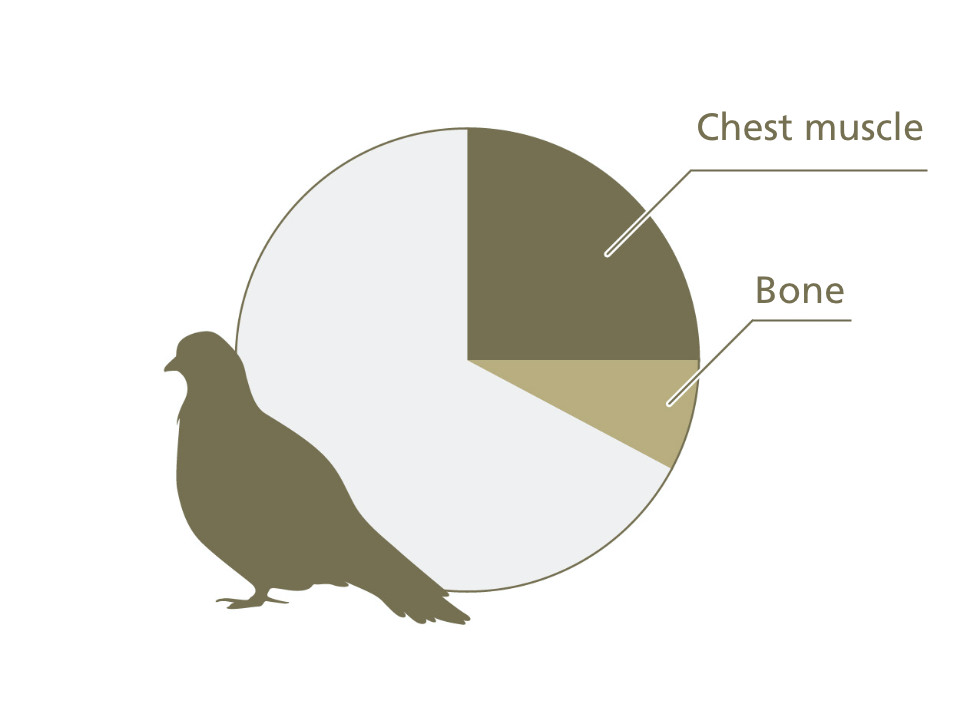
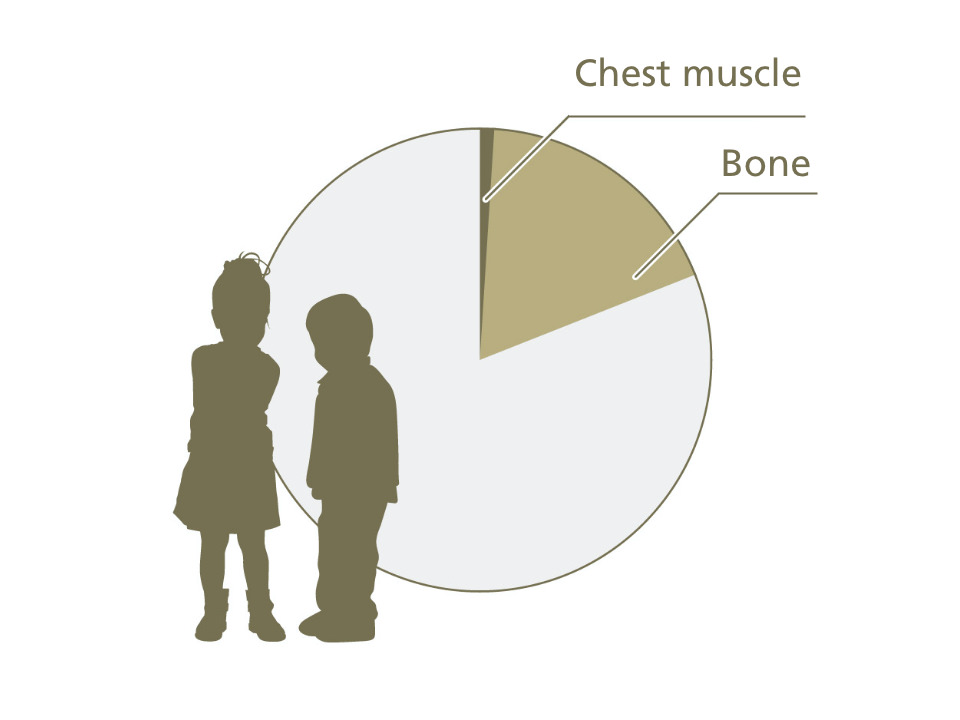
When you watch gulls near the seaside or pigeons in the park, you will notice that birds sit or stand facing into a strong wind (the direction the wind is coming from).
The reason for this is that a bird's feathers all grow in the same direction. Bird feathers provide a streamlined coat fitted neatly along the body from the bill back toward the tail. If they faced with the wind (the direction the wind is blowing), their feathers might all stand up on end and get messed up, right?
This streamlined shape, also used for high-speed rail cars, allows the oncoming wind to pass around it easily. Normally, the faster you move, the more difficult it is to advance because of drag caused by the air, but with a streamlined shape there is minimal drag, enabling smooth forward movement.
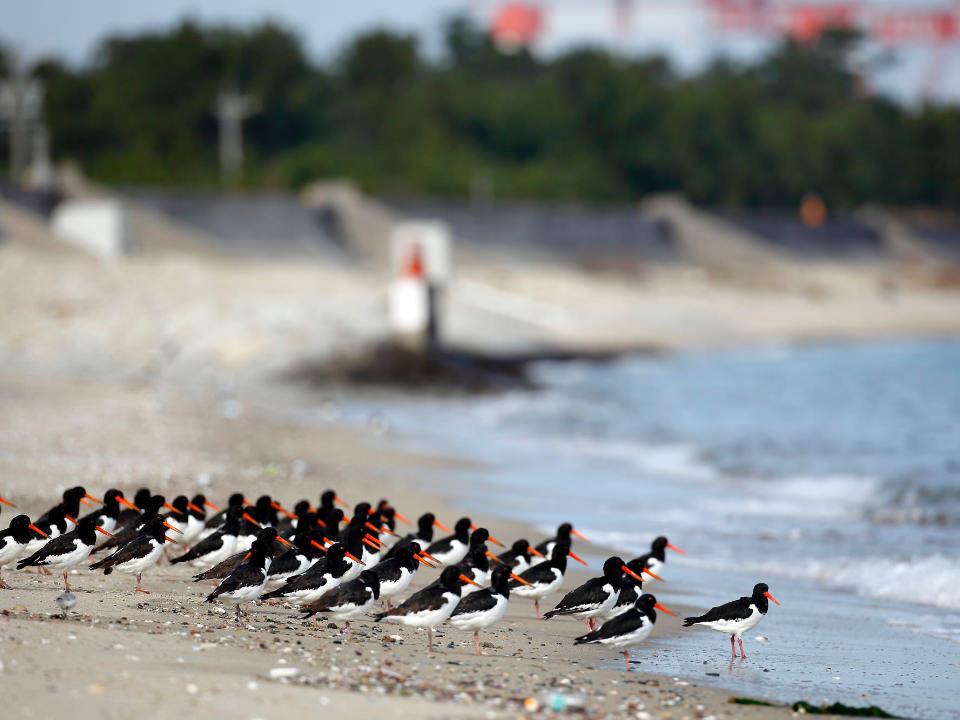
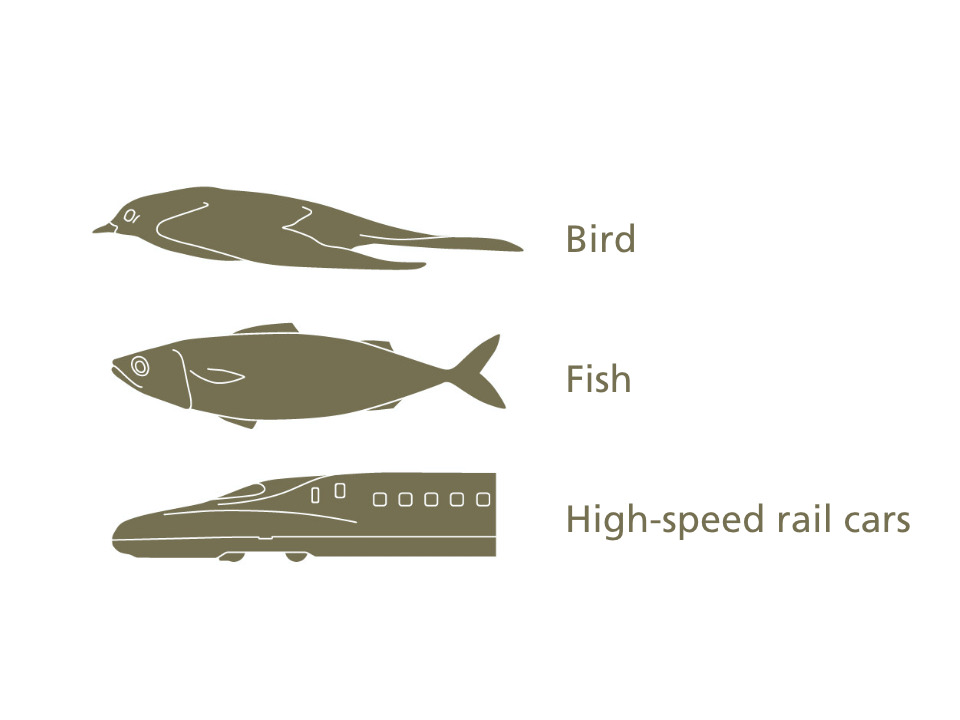

Challenge #4
Now you understand how a bird moves forward and achieves lift when flying by flapping its wings up and down. When you see a bird in flight, there are other things you should notice about the way it flaps its wings and how it flies.
Pigeons fly in a straight and level path while continuously flapping their wings, but some birds, such as Brown-eared Bulbuls and wagtails, fly in an undulating pattern like they are drawing a wave, flapping their wings during the rising phase, then gliding as they descend into the valley of the wave.
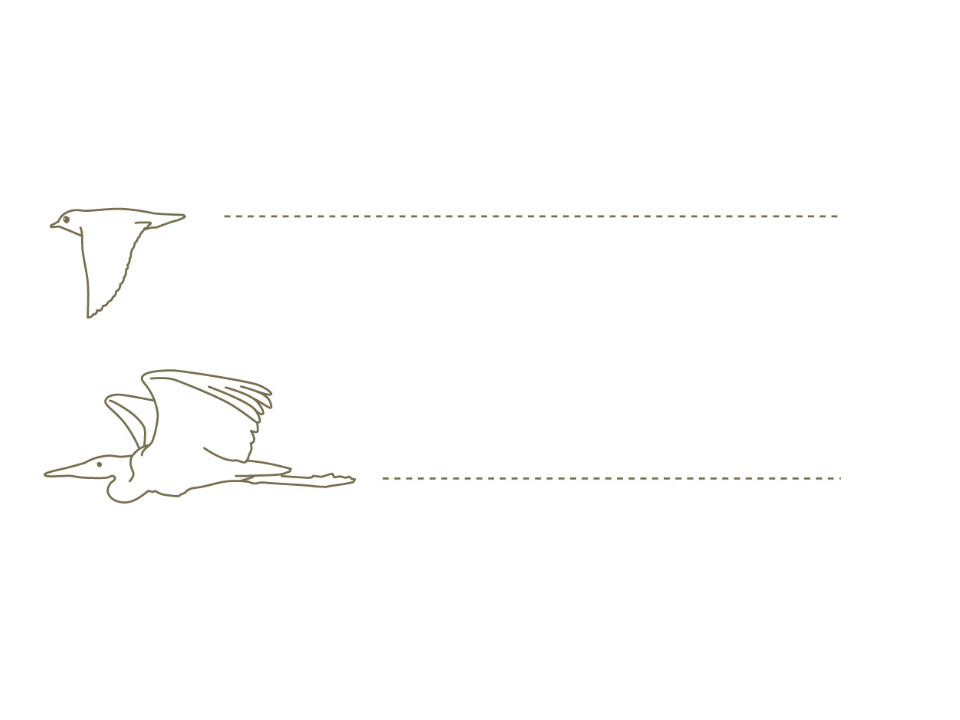
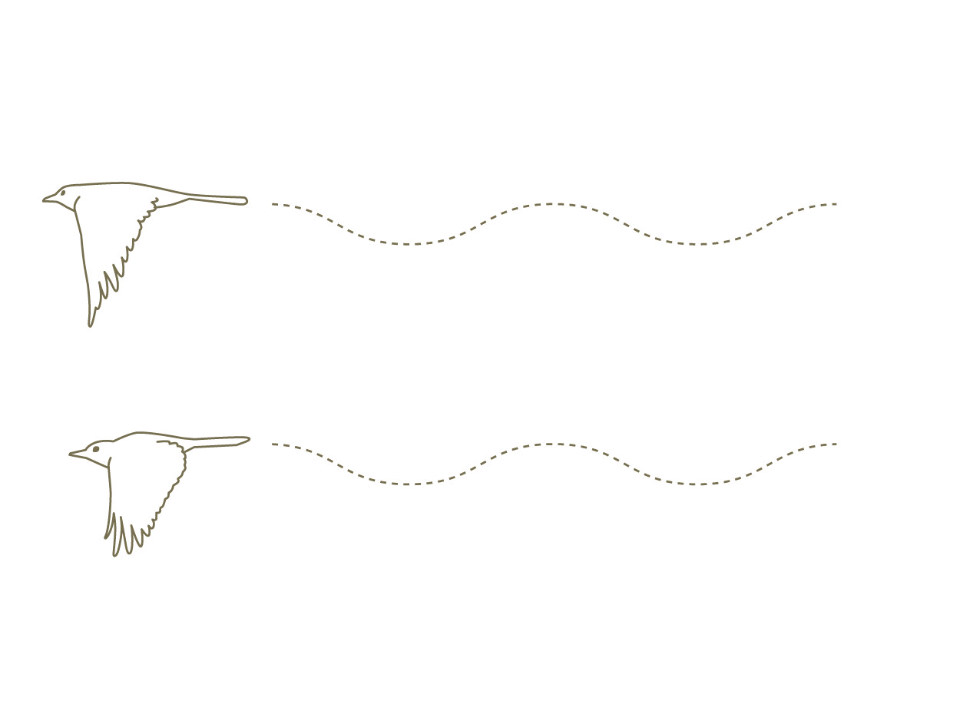
When hunting for prey and at other times the Common Kestrel remains in a stationary position in the air, going neither forward nor upward. This is called “hovering.” As you probably know, when a helicopter stays in one position in the air it is also called hovering.
Another flight style is “gliding,” when a bird flaps its wings a little and then spreads them wide and flies straight. You can observe common birds such as swallows and kites using this style.
And, when a bird glides with its wings spread wide and flies into a rising air current it is called “soaring.”
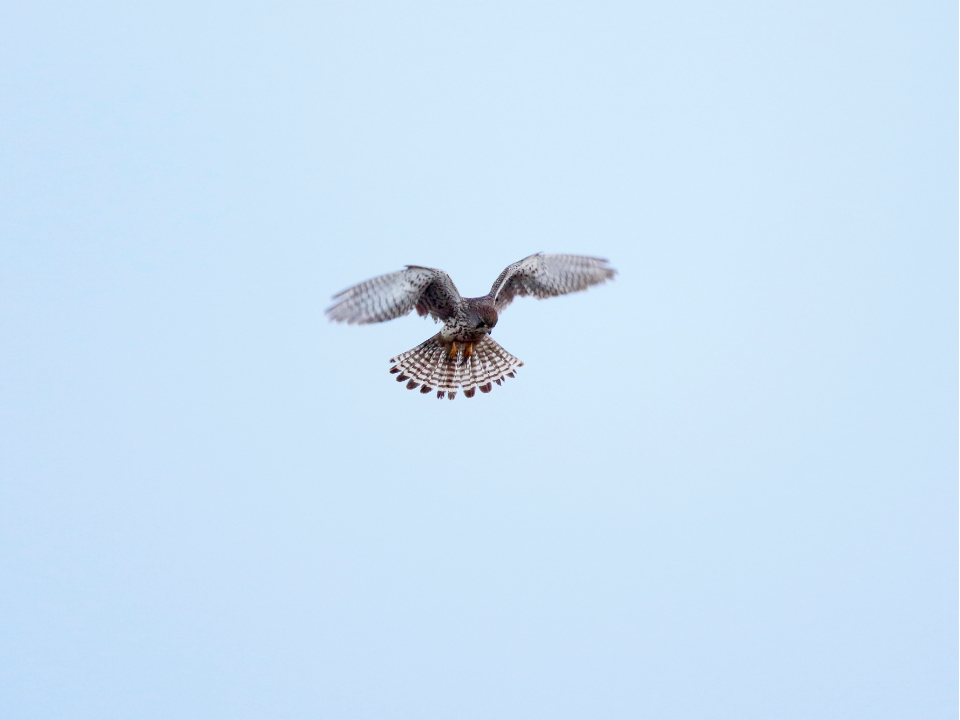
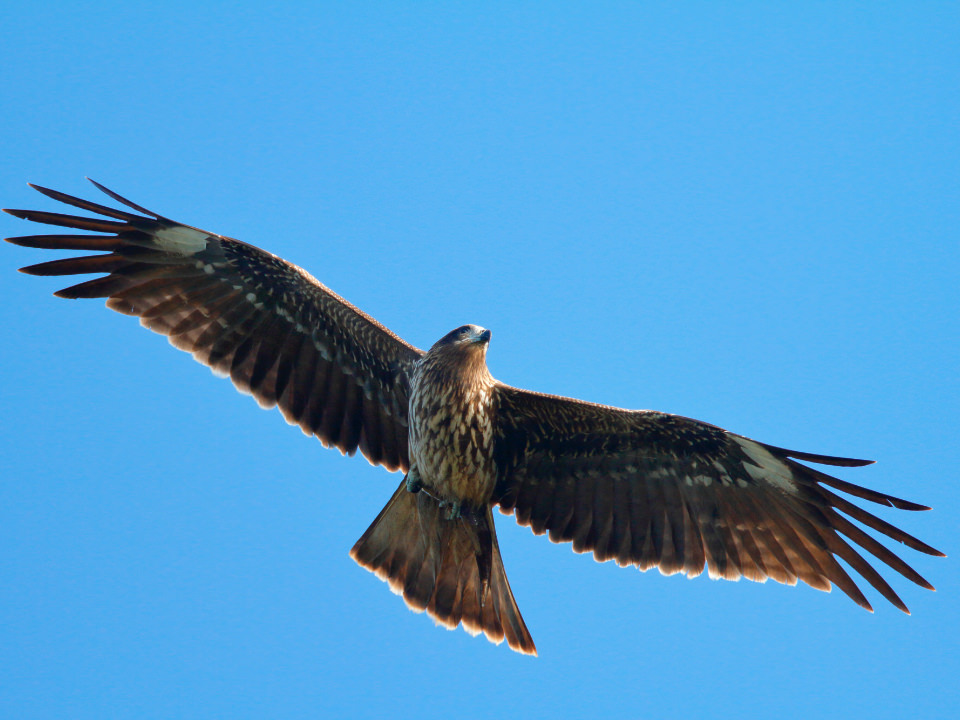

Have you found the secret to how birds fly?
A bird's body has a variety of ingenious features that enable it to fly freely in the sky, doesn't it?
When you observe common birds closely you can recognize the differences in flight pattern and see how they care for their flight feathers!
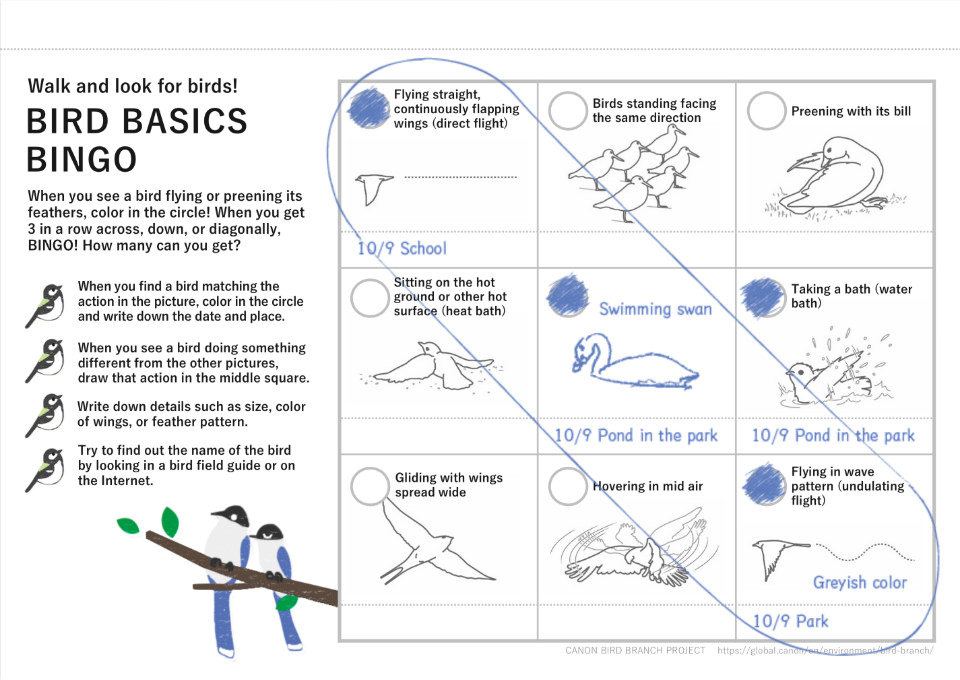
writer
Wild Bird Society of Japan
In 1981, appointed Chief Ranger of Lake Utonai Sanctuary in Hokkaido, the first sanctuary designated by the Wild Bird Society of Japan.
Currently Consultant of the Wild Bird Society of Japan. Travels throughout Japan and the world giving lectures on wild birds, nature observation and environmental education. More than 450,000 copies of a wild bird field guide for which he provided commentary have been published.
